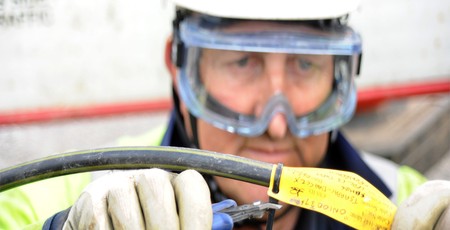UK commits to full fibre future
July 23, 2018 | 11:07
Companies: #department-for-digital-culture-media-and-sport #ofcom #openreach #uk-government

The UK government has outlined what it describes as a 'full fibre broadband and 5G future for all,' a long-term digital connectivity strategy proposal which aims to prioritise funding for rural broadband connectivity and sets a timescale for the closure of the copper-based communication network on which the nation has long relied.
Announced during the Royal Welsh Show, the government's Future Telecoms Infrastructure Review (FTIR) proposes a raft of changes which are designed to bring 5G and full fibre connectivity to the entire UK - but, before you get excited, the review comes with a rather generous schedule that won't see its goals met until 2033.
'We want everyone in the UK to benefit from world-class connectivity no matter where they live, work or travel. This radical new blueprint for the future of telecommunications in this country will increase competition and investment in full fibre broadband, create more commercial opportunities and make it easier and cheaper to roll out infrastructure for 5G,' claims new Digital Secretary Jeremy Wright of the proposal. 'The FTIR’s analysis indicates that, without change, full fibre broadband networks will at best only ever reach three quarters of the country, and it would take more than twenty years to do so. It also indicates that 5G offers the potential for an expansion of the telecoms market, with opportunities for existing players and new entrants.'
To address that, the FTIR recommends: new legislation requiring full fibre connectivity to all new-build developments; a 'right to entry' for communication operators allowing them access to flats, business parks, office blocks, and other tenanted properties that would end the current system of landlords forcing connectivity through a single central provider; regulatory reforms to drive investment in full fibre connectivity, alongside public investment to bring full fibre to rural areas; an Ofcom-coordinated switchover from the copper connectivity that currently underpins the nation's telecoms network to a full fibre system; a new nationalised framework to minimise streetwork disruption; increased spectrum allocations for 'innovative 4G services'; and regulatory changes to allow unrestricted access to Openreach-owned ducts and poles for both residential and business services.
Currently, only four percent of the UK's communications infrastructure is classed as 'full fibre' - well behind continental nations including Spain, Portugal, and France, at 71 percent, 89 percent, and 28 percent and growing respectively.
The government has confirmed it plans to publish consultations on methods for implementing the FTIR's recommendations shortly, and will use them as a basis for a Statement of Strategic Priorities (SSP) for communications regulator Ofcom.

MSI MPG Velox 100R Chassis Review
October 14 2021 | 15:04








Want to comment? Please log in.